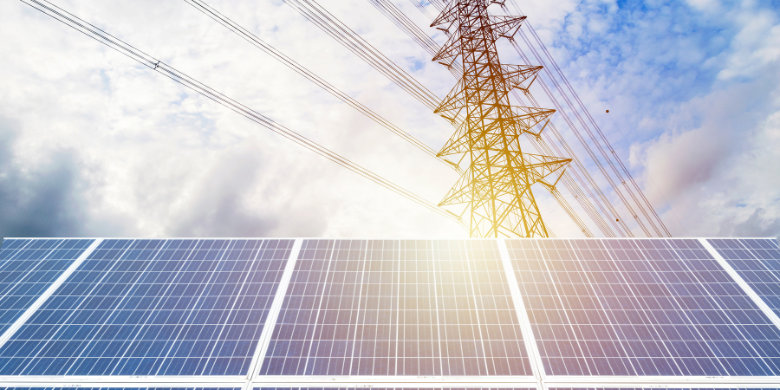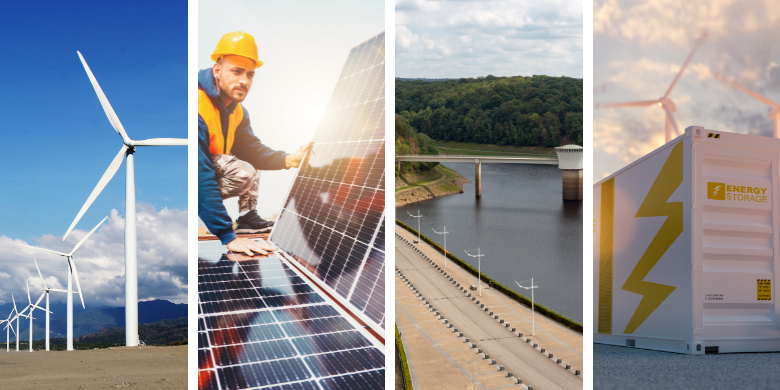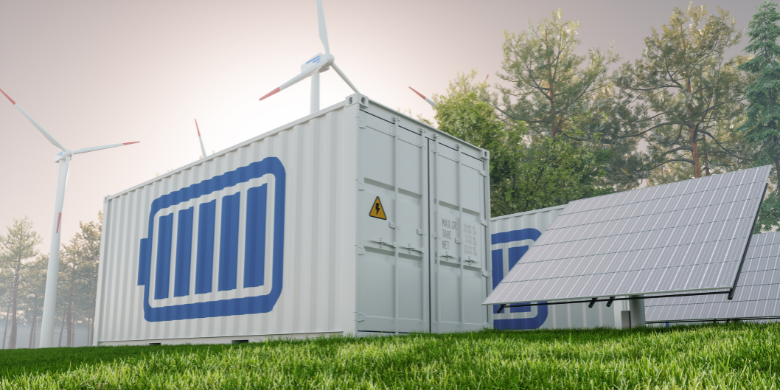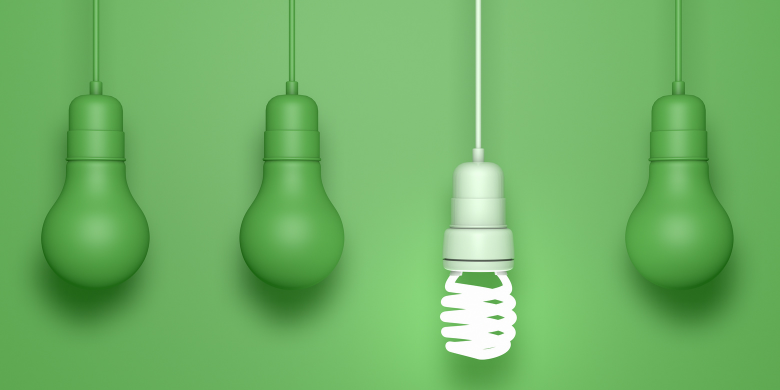Welcome to our in-depth guide on electrical power generation in the construction industry, as outlined by the Construction Specification Institute’s (CSI) Division 48. Our goal is to provide you with a wealth of knowledge and best practices surrounding electrical power generation systems and their implementation in various construction projects.

In the following sections, we’ll discuss the significance of Division 48 in the broader context of the construction industry, explore the different types of electrical power generation systems covered by this division, and delve into design principles, key components, regulatory compliance, case studies, and future trends. By the end of this guide, you’ll have a thorough understanding of:
- The critical role of CSI’s Division 48 in the construction industry
- Various electrical power generation systems and their applications
- Best practices and design principles for electrical power generation
- Essential components and materials used in power generation systems
- Regulatory compliance, certifications, and permitting
- Real-world examples of successful electrical power generation projects
- Emerging trends and technologies influencing the future of power generation
This comprehensive guide is carefully crafted for architects, engineers, contractors, project managers, and anyone interested in understanding the complexities and nuances of electrical power generation in the modern construction industry. Stay tuned as we uncover the ins and outs of this vital aspect of sustainable, efficient, and innovative construction.
Table of contents
- Section 1: Introduction to CSI Division 48 – Electrical Power Generation
- Section 2: Types of Electrical Power Generation Systems in CSI Division 48
- Section 3: Design Principles and Best Practices for Electrical Power Generation Systems
- Section 4: Key Components and Materials in Electrical Power Generation Systems
- Section 5: Regulatory Compliance and Certifications for Electrical Power Generation Systems
Suggested Posts:
- Introduction to CSI MasterFormat and Division 01
- Smart Apartment Units – Key Features that Residents Look for
- Understanding CSI MasterFormat: Division 14- Conveying Equipment
- Mastering Division 09 – Finishes in the CSI MasterFormat System for Improved Project Success
Section 1: Introduction to CSI Division 48 – Electrical Power Generation
Welcome to the world of Construction Specification Institute’s (CSI) Division 48 – Electrical Power Generation. This blog post aims to provide you with a comprehensive introduction to Division 48, its significance in the construction industry, and its organization. By the end of this section, you will have a solid understanding of the essential terminologies and concepts involved in electrical power generation.
1.1 Overview of CSI MasterFormat
CSI MasterFormat is a standardized classification system used by the construction industry to organize project manuals, construction documents, and detailed specifications. It is a hierarchical system divided into Divisions and Sections that cover various aspects of construction projects, including materials, products, and systems.
1.2 Role of Division 48 in the construction industry
Division 48 plays a crucial role in the construction industry as it focuses on Electrical Power Generation. With the growing demand for clean and sustainable energy sources, the construction sector needs to adopt modern electrical power generation technologies. Division 48 provides a comprehensive framework for specifying, designing, and installing various types of electrical power generation systems.
1.3 Organization of Division 48
Division 48 is organized into multiple subsections, each focusing on a specific type of electrical power generation system or component. Some of the major subsections include:
- Photovoltaic systems
- Wind turbine systems
- Hydroelectric power systems
- Geothermal energy systems
- Fuel cell systems
- Energy storage systems

1.4 Essential Terminologies and Concepts Involved in Electrical Power Generation
Before we delve deeper into the world of electrical power generation, it is essential to familiarize yourself with some basic terminologies and concepts:
- Power generation: The process of converting other forms of energy (e.g., solar, wind, hydro, etc.) into electrical energy.
- Renewable energy: Energy sources that are replenished naturally and are not depleted upon use, such as solar, wind, and hydro energy.
- Energy storage: Devices or systems used to store electrical energy (e.g., batteries, capacitors, etc.) for later use or integration with power generation systems.
- Grid integration: The process of connecting electrical power generation systems to the existing power grid to supply electricity to homes, businesses, and industries.

Stay tuned for the next section, where we explore the different types of electrical power generation systems in CSI Division 48 and their applications in the construction industry. With our guidance, you will gain valuable insights into the design principles, best practices, key components, and regulatory compliance required for the successful implementation of these systems in your projects.
Section 2: Types of Electrical Power Generation Systems in CSI Division 48
The various types of electrical power generation systems outlined in the CSI Division 48 play a crucial role in meeting the ever-growing energy demand in the construction industry. In this section, we will delve into these systems, highlighting their key features, applications, and advantages.
2.1 Photovoltaic Systems
Photovoltaic (PV) systems, commonly referred to as solar panels, convert sunlight into electricity. These systems are increasingly popular due to their low environmental impact, ability to generate power on-site, and long-term cost-saving advantages. Key applications of PV systems include residential, commercial, institutional, and industrial buildings, as well as utility-scale solar farms.
2.2 Wind Turbine Systems
Wind turbine systems harness the power of the wind to generate electricity. These systems can range from small, single-turbine installations for individual use to large-scale wind farms generating power for entire communities. Key advantages of wind turbine systems include lower greenhouse gas emissions and the potential for significant energy cost savings over time.
2.3 Hydroelectric Power Systems
This type of power generation system utilizes the movement of water to produce electricity. Common types of hydroelectric installations include dam-based systems, run-of-the-river systems, and pumped-storage hydroelectric facilities. Hydroelectric power systems can produce a substantial amount of electricity with minimal environmental impact and high efficiency.
2.4 Geothermal Energy Systems
Geothermal energy systems tap into the earth’s natural heat to generate electricity. These systems involve drilling deep wells and utilizing the heat from the earth’s core to produce steam, which then powers a turbine to generate electricity. Geothermal energy systems offer a consistent power output and can significantly reduce carbon emissions and reliance on fossil fuels.
2.5 Fuel Cell Systems
Fuel cell systems generate electricity through a chemical reaction involving hydrogen and oxygen. These systems are clean and efficient, producing only water and heat as byproducts. Fuel cells are an emerging technology with the potential for widespread adoption in various applications, including backup power solutions and transportation.
2.6 Energy Storage Systems
Energy storage systems play an essential role in managing fluctuations in electricity supply and demand. Common types of energy storage systems include batteries, pumped-hydro storage, and flywheels. These systems can store excess power generated by renewable energy sources for later use, helping to reduce reliance on fossil fuels and increase overall grid stability.
In conclusion, CSI Division 48 encompasses a wide range of innovative and sustainable electrical power generation systems, playing a critical part in meeting both the current and future energy needs of the construction industry. By understanding the unique features and benefits of each system type, stakeholders can make informed decisions that contribute to more energy-efficient, economically viable, and environmentally conscious construction projects.

Section 3: Design Principles and Best Practices for Electrical Power Generation Systems
In this section, we delve into the design principles and best practices for electrical power generation systems, as outlined by CSI Division 48. A well-designed system not only enhances energy efficiency but also ensures the safety and reliability of the overall system.
3.1 Site Selection and Evaluation
The first crucial factor in designing an efficient electrical power generation system is site selection and evaluation. The location should have optimal environmental conditions, such as sunlight exposure for photovoltaic systems or wind speed for wind turbine systems. Additionally, the site should have minimal obstacles or interference from neighboring structures, and be in compliance with local regulations and zoning requirements.
3.2 System Sizing and Capacity
Determining the appropriate system size and capacity involves a thorough analysis of the building’s energy requirements. This includes calculating the estimated energy consumption, peak demand periods, and potential energy savings. The system should be designed to generate enough power to meet these energy demands, while also considering scalability for future needs.
3.3 Integration with Existing Electrical Infrastructure
Electrical power generation systems must be seamlessly integrated with the building’s existing electrical infrastructure. This includes proper connections and interconnections between various components, such as generators, inverters, and transformers. The design should also account for how the system will interact with the utility grid, especially during power outages or periods of high energy demand.
3.4 Safety and Maintenance Considerations
Safety is paramount when designing electrical power generation systems. The design should incorporate protective measures, such as circuit breakers, fuses, and grounding systems, to prevent accidents or damage to equipment. In addition, the design should facilitate easy maintenance and repair processes, ensuring the long-term performance and reliability of the system.
3.5 Optimizing System Performance
An efficient electrical power generation system should be designed with optimization in mind. This includes selecting high-quality components and materials, as well as incorporating energy-efficient technologies and practices. By optimizing system performance, building owners can reduce energy consumption, minimize operational costs, and lessen their ecological footprint.
3.6 Environmental Considerations and Sustainability
Lastly, it is essential to design electrical power generation systems with environmental considerations and sustainability in mind. This involves selecting renewable energy sources, such as solar, wind, or hydroelectric power, whenever possible. The system should also be designed to minimize negative environmental impacts, such as noise pollution or visual disruption while promoting energy conservation and long-term sustainability.
In conclusion, by adhering to these design principles and best practices, building owners and construction professionals can create electrical power generation systems that are not only safe and reliable but also energy-efficient and environmentally friendly.

Section 4: Key Components and Materials in Electrical Power Generation Systems
In this section, we will delve deep into the key components and materials used in electrical power generation systems, following the guidelines set forth by CSI Division 48. Understanding these components and their respective functions is crucial to ensuring the reliability and performance of these vital systems.
4.1 Generators and inverters
Generators and inverters are essential components in power generation systems, as they convert mechanical or solar energy into electrical energy. Generators are responsible for producing electricity, while inverters convert the direct current (DC) generated into alternating current (AC), which is the standard form of electricity used in most buildings.
4.2 Cabling and Wiring
Cabling and wiring play a significant role in transmitting electricity from the power source to the end user. High-quality cables and wires are necessary to ensure efficient and safe energy transmission, minimizing energy loss and preventing accidents caused by electrical faults.
4.3 Structural Components and mounting systems
Structural components and mounting systems provide the necessary support for electrical power generation equipment, such as solar panels, wind turbines, and hydroelectric generators. These components must be sturdy, reliable, and resistant to corrosion and other environmental factors, ensuring the longevity of the system.
4.4 Energy storage devices (batteries, capacitors, etc.)
Energy storage devices, including batteries and capacitors, are crucial for maintaining a reliable power supply and avoiding fluctuations in energy production. In renewable energy systems, these devices store excess energy and release it during periods of low production, such as cloudy days or low wind speeds.
4.5 Monitoring and control systems
Monitoring and control systems are essential in assessing the performance, efficiency, and safety of electrical power generation systems. These systems collect data from various sensors, allowing operators to track component performance, identify issues, and make real-time adjustments to optimize energy production.
4.6 Protective and safety devices
Protective and safety devices, such as circuit breakers, fuses, and surge protectors, ensure the safe operation of electrical power generation systems. These devices help prevent electrical faults, overloads, and short circuits, safeguarding the equipment and personnel involved in the system’s operation.
By understanding the key components and materials in electrical power generation systems, construction professionals can ensure the selection of reliable, efficient, and safe equipment for their projects. In the next section, we will discuss the importance of regulatory compliance and certifications in the construction industry.
Section 5: Regulatory Compliance and Certifications for Electrical Power Generation Systems
Ensuring the safety and performance of electrical power generation systems in the construction industry is essential. In this section, we’ll discuss the various codes, regulations, and certifications that are applicable to these systems and the importance of adhering to these standards.
5.1 Applicable Codes and Standards
When designing and installing electrical power generation systems, it’s crucial to follow certain codes and standards to ensure safety and performance. Some of the most well-known standards include:
- NEC (National Electrical Code): A set of safety guidelines for the installation and maintenance of electrical systems in the United States. It covers topics such as grounding, bonding, and overcurrent protection.
- IBC (International Building Code): A model building code that provides minimum requirements to safeguard public health, safety, and general welfare in the built environment.
- UL (Underwriters Laboratories): A global safety certification company that develops standards and test procedures for products, materials, and systems, including electrical power generation equipment.
5.2 Permitting and Inspections
Before installing an electrical power generation system, it’s essential to obtain the necessary permits and approvals from local authorities. This may include building permits, electrical permits, and inspections to ensure compliance with applicable codes and standards.
5.3 Industry Certifications and Compliance
In addition to adhering to codes and standards, obtaining industry certifications can demonstrate a commitment to quality, safety, and environmental responsibility. Examples of certifications relevant to electrical power generation systems include:
- LEED (Leadership in Energy and Environmental Design): A green building certification program that recognizes best-in-class building strategies and practices.
- NABCEP (North American Board of Certified Energy Practitioners): A certification organization for solar and wind energy professionals, offering credentials that signify a high level of competence and ethical behavior.
5.4 Quality Assurance and Testing
To ensure the reliability and performance of electrical power generation systems, rigorous testing, and quality assurance processes should be in place. This may involve factory testing of components, field testing of systems, and ongoing monitoring and maintenance to identify and address any issues that may arise throughout the lifespan of the system.

5.5 Health, Safety, and Environmental Considerations
Lastly, the construction and operation of electrical power generation systems must prioritize health, safety, and environmental considerations. This can be achieved by conducting thorough risk assessments, implementing safety procedures, and minimizing the environmental impact of the installation and operation of the systems.
In conclusion, adhering to regulations and certifications for electrical power generation systems is critical for ensuring their safety, performance, and long-term success. By complying with industry standards, obtaining certifications, and prioritizing health and safety, the construction industry can confidently incorporate these systems into projects and contribute to a more sustainable future.
Upgrade Your Building Security
Get in touch with a Swiftlane specialist for more information on the best access control and video intercom solution for your building.




